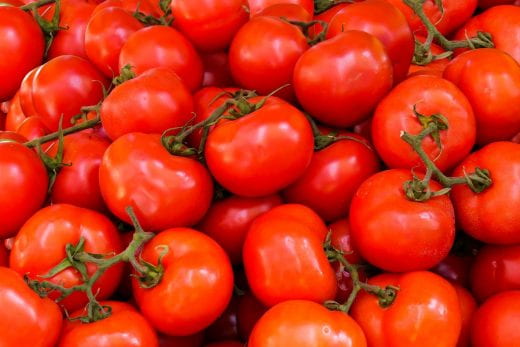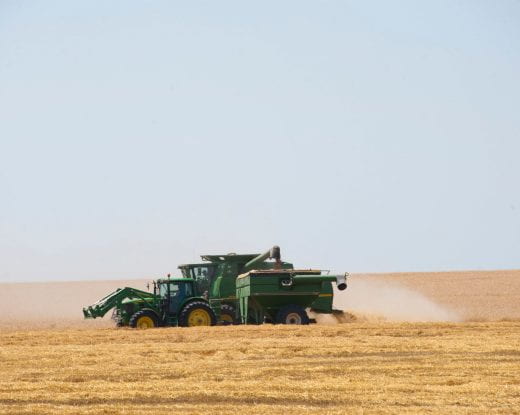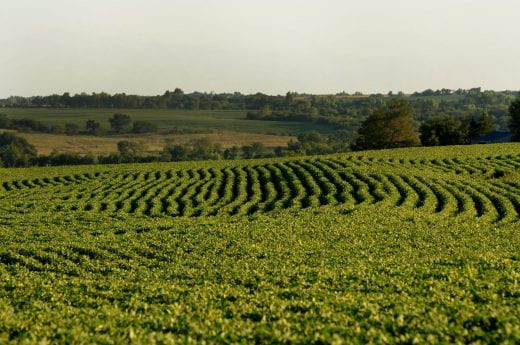Today, in Better Kansas we touch on personal financial information, cooking with kids, red mulch and tomatoes, Kansas farmland values and stripe rust in wheat. This is a small glimpse of what K-State Research and Extension across the state has to offer. Please share on social media and subscribe! – Mary Lou Peter mlpeter@ksu.edu
Better Living, Better Communities
WE’RE STILL DEALING WITH A PANDEMIC and it’s still wreaking havoc on many Kansans’ financial situations. Some have lost jobs or closed businesses. Even if they have found other work, they may have had to cobble two part-time positions together to come close to what they were making before. Others are still looking. For good times and bad, the Financially Speaking web page has resources focused on supporting the financial health and wellness of Kansans and their communities. Topics of written articles and videos include credit reports, the pandemic and student loans, coronavirus scams, shopping on a budget and much more. Take a look.
 WHETHER IT’S PLAYING WITH THE MEASURING CUPS OR MIXING UP COOKIE DOUGH, KIDS LOVE TO BE IN THE KITCHEN. It seems like many children who learn to cook with a parent or grandparent go on to enjoy cooking and baking through adulthood. If you’re looking for ways to engage children in the kitchen, including simple recipes to make together plus nutrition and food safety information, take a look at the Kids a Cookin’ website. It includes videos, plus recipe cards, cooking terminology, money saving tips, how to use appliances safely and more. I mentioned a few weeks ago that children who help grow their own food are more likely to at least try tasting those foods. I think the same principle applies here.
WHETHER IT’S PLAYING WITH THE MEASURING CUPS OR MIXING UP COOKIE DOUGH, KIDS LOVE TO BE IN THE KITCHEN. It seems like many children who learn to cook with a parent or grandparent go on to enjoy cooking and baking through adulthood. If you’re looking for ways to engage children in the kitchen, including simple recipes to make together plus nutrition and food safety information, take a look at the Kids a Cookin’ website. It includes videos, plus recipe cards, cooking terminology, money saving tips, how to use appliances safely and more. I mentioned a few weeks ago that children who help grow their own food are more likely to at least try tasting those foods. I think the same principle applies here.
Better Farming, Ranching and Gardening
ONE OF THE MORE FASCINATING THINGS I’VE LEARNED about gardening in recent years, is that using red plastic mulch around tomato plants increases production of marketable fruit, compared with rolling out the black plastic mulch. That increase can average 12%! For a detailed look at how home gardeners can install it, see the April 20 Horticulture Newsletter. It includes brief entries on other topics also such as sharpening mower blades, pesky orchardgrass in tall fescue lawns, fertilizing strawberries, and more. It even explains and shows the difference between an ant and a termite.
DO YOU WONDER WHAT FARMLAND IN YOUR AREA IS SELLING FOR? OR WHAT YOU MIGHT HAVE TO PAY FOR YOUR COUSIN’S IRRIGATED LAND IN SOUTHWEST KANSAS? There’s plenty of variability in land values, based on region, productivity level, and local demand, so it’s hard to interpret an average for the value of farmland across our state. But we know that the price of non-irrigated farmland (most of Kansas) was $2,032 per acre in 2020, up slightly from 2019 but down 3.9% from the five-year average. The average price for irrigated cropland was $3,247 per acre, up from 2019 and 1.5% above the five-year average. Take a look at Kansas Agriculture and Land Values for 2020 for a summary of agriculture last year and a detailed look at farmland values right down to the regional and county level.
STRIPE RUST, A COMMON FOE OF WHEAT is beginning to show up in southeast Kansas wheat fields. Though observance of the disease is low right now, stripe rust, which can easily cut yields by 40% and even destroy an entire crop, is expected to expand. That’s according to a recent Agronomy eUpdate article. Take a look for great pictures of what to look for, and even where to look, depending on your crop’s stage of development. If you find it in your crop, send an email to extension plant pathologist Kelsey Andersen Onofre at andersenk@ksu.edu, who’s tracking the disease.
_
For more resources and activities, contact the K-State Research and Extension office in your area. Check out our other blogs and subscribe to our weekly emails here: https://www.ksre.k-state.edu/news/blogs/











